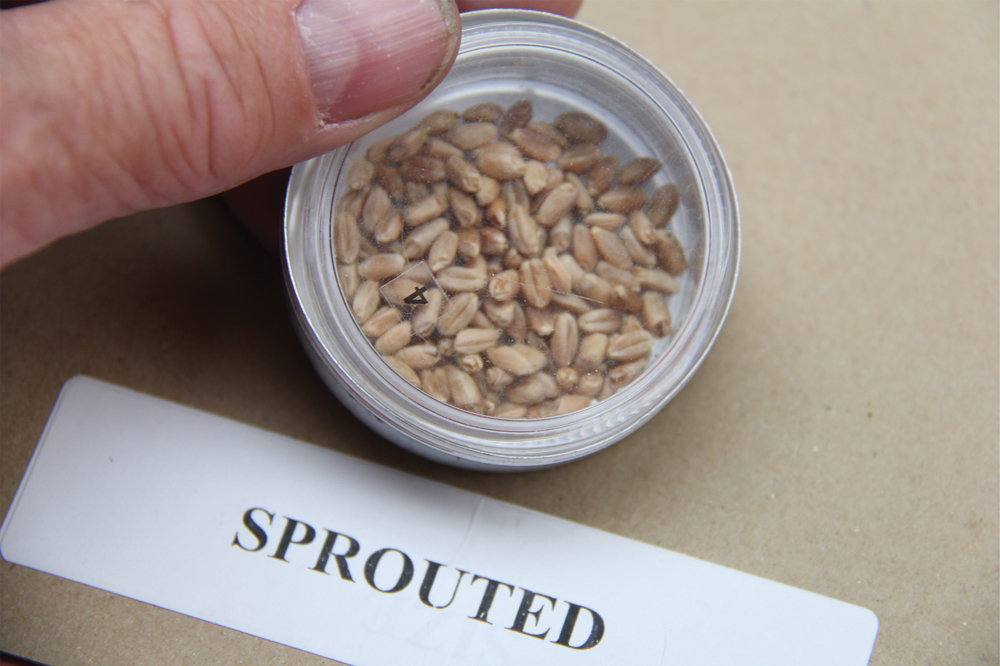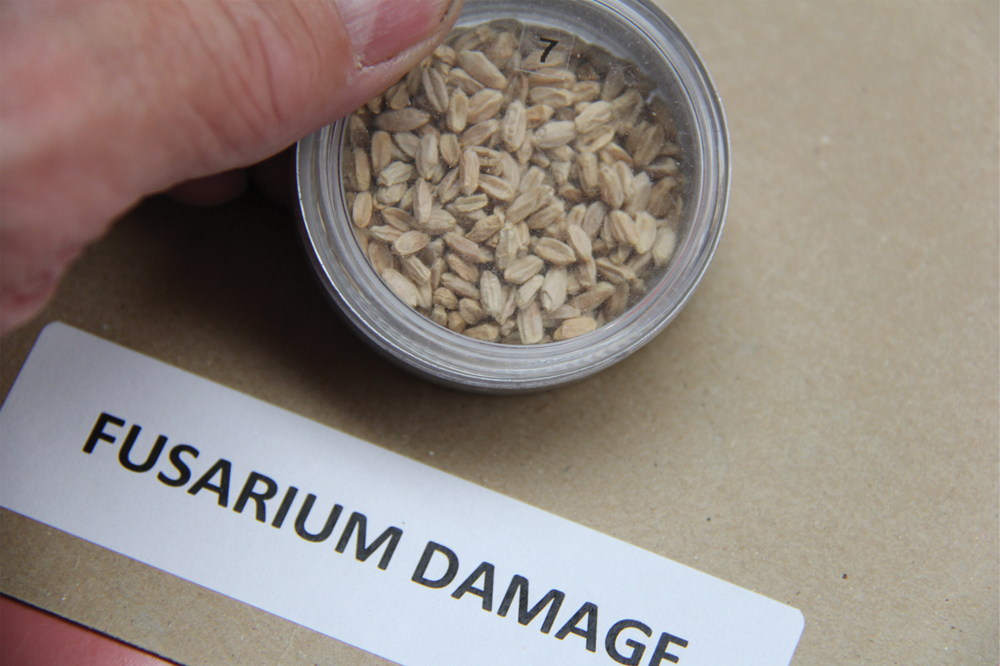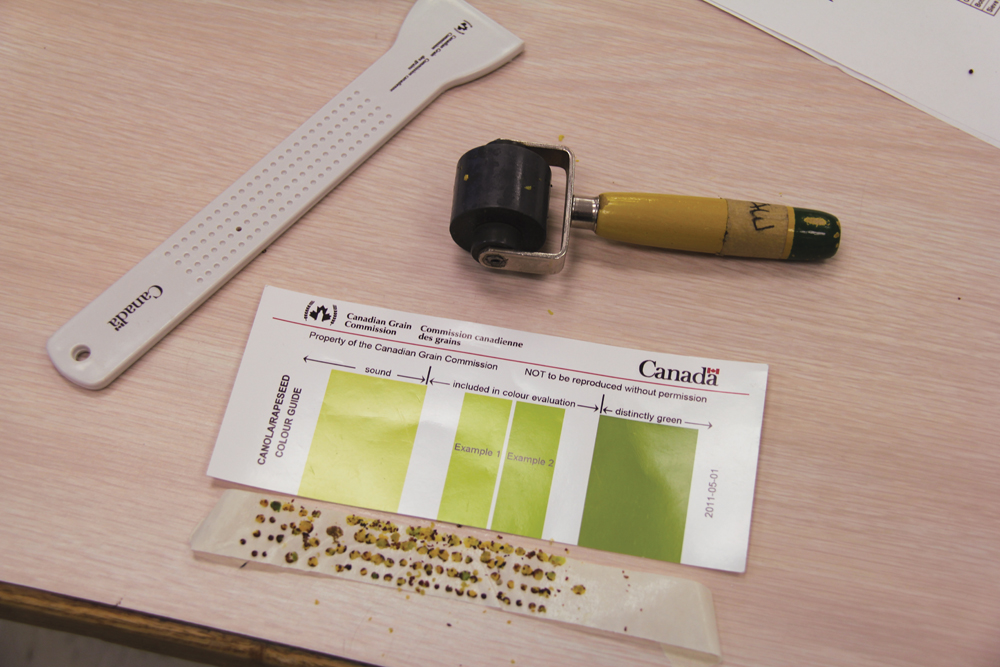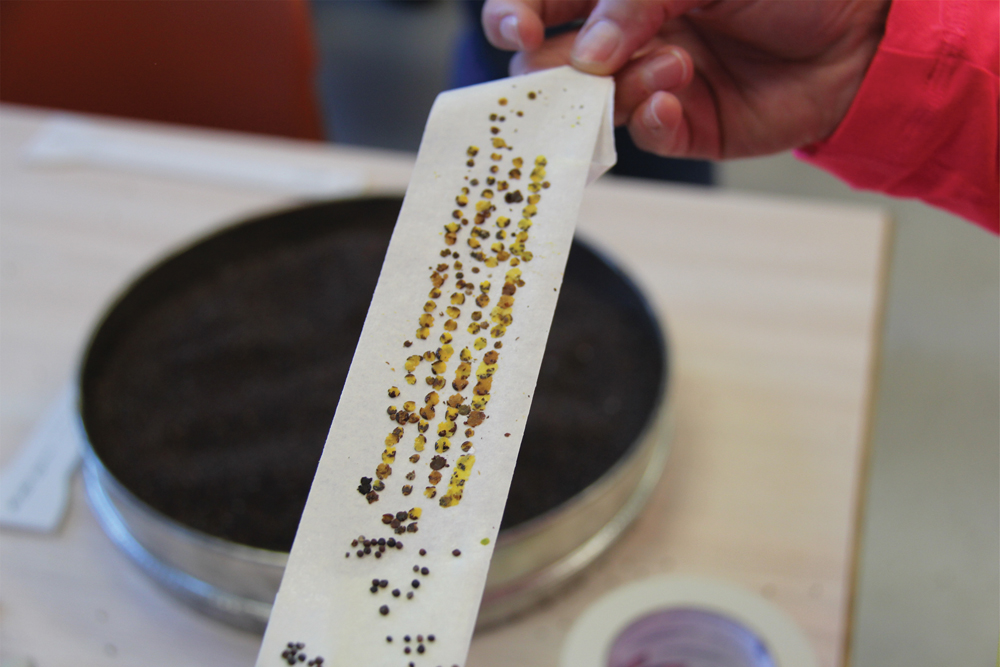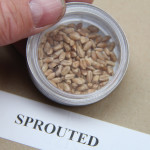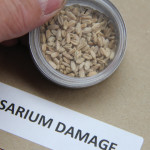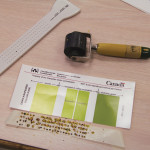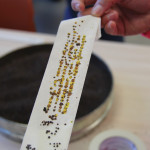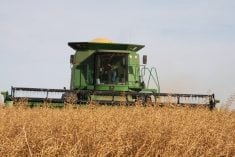
Bill Adduono wheat .JPG
Farmers and grain marketers attending a recent one-day workshop at Olds College look over a sample of Hard Red Spring wheat to determine how much mildew damage appeared in the sample and then decide whether it Graded No. 1, No. 2, or No. 3. Bill Adduono (r), green shirt, an operations supervisor with the Canadian Grain Commission provided directions and advice on the visual grading process which is anything but clearcut.
Photo: Lee Hart
Sprouted wheat .JPG
This sample of sprouted wheat stands out when isolated from good quality seed, but it becomes an art and a science to look at a random sample of wheat and pick out the affected kernels and then make a call on the percentage of contamination.
Photo: Lee Hart
Fusarium wheat .JPG
This sample of fusarium infected wheat stands out when isolated from good quality seed, but it becomes an art and a science to look at a random sample of wheat and pick out the affected kernels and then make a call on the percentage of contamination.
Photo: Lee Hart
Canola roller .JPG
After collecting and crushing a 100-seed canola sample the question is how does it grade? These crushed seeds are compared to an official Canadian Grain Commission colour chart to estimate the amount of green seed in the seed sample.
Photo: Lee Hart
canola seed tape .JPG
After collecting and crushing a 100-seed canola sample the question is how does it grade? These crushed seeds are compared to an official Canadian Grain Commission colour chart to estimate the amount of green seed in the seed sample.
Photo: Lee Hart
As farmers attending the workshop sponsored by Alberta Barley, Alberta Wheat Commission and the Alberta Canola Producers Commission heard again, determining quality of any particular sample is a subjective process.
While some quality sorting technology is available and is in the process of being refined, determining the quality and grade of wheat, barley and canola is still largely a matter of human judgment. And that reading of a sample can vary from grain buyer to grain buyer based on a wide range of factors.


